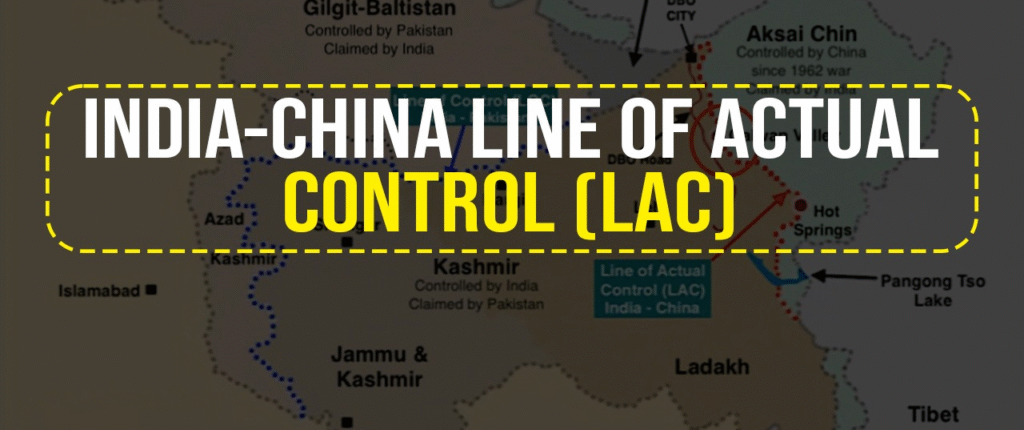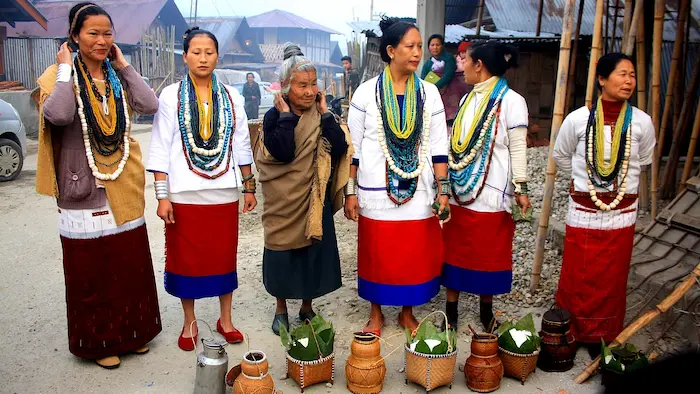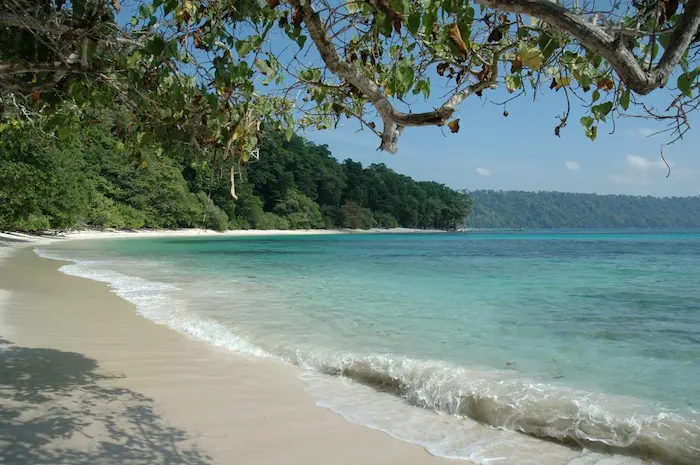1. India’s Generic Medicines: A Pillar of Global Healthcare – Economy

Why in News?
India’s pharmaceutical sector, especially its generic medicine exports, is facing uncertainty due to the potential imposition of sector-specific duties by the U.S. Given that over 31% of India’s pharmaceutical exports are to the U.S., and nearly half of U.S. generic drug imports are from India, this development could significantly affect India’s role as the “pharmacy of the world.” The issue is emerging amid ongoing trade negotiations and global regulatory debates, making it crucial for India to safeguard its long-term pharmaceutical export interests.
Key Highlights
- India supplies 20% of global generic drugs, earning the label “Pharmacy of the World.”
- Indian generics dominate U.S. prescriptions, especially in areas like diabetes, cancer, mental health, and infectious diseases.
- In 2022 alone, Indian generics saved the U.S. healthcare system $219 billion.
- The global generics market is projected to reach $614 billion by 2030.
- The U.S. is pushing for:
- International Reference Pricing (IRP)
- Stronger Intellectual Property (IP) protections
- India’s resistance is based on protecting TRIPS flexibilities, including compulsory licensing provisions.
- India is considering offering generics at 20–25% of branded drug prices for 3 years post-patent expiry to balance trade interests.
- There’s a call for India to move from a transactional to a strategic approach in bilateral trade negotiations.
- Focus areas for India going forward:
- Technology transfer
- Collaborative R&D
- Global partnerships
- Promotion of generics as a global public good
Detailed Explanation
India’s Pharmaceutical Strength:
India’s dominance in generics stems from a robust manufacturing base, low production costs, and a favourable regulatory ecosystem. With a focus on affordable medicines, India has enabled both domestic and global access to life-saving drugs.
Trade Concerns with the U.S.:
The U.S. has raised concerns about India’s pricing mechanisms and IP regime, which it claims undercut innovation. Proposed measures like International Reference Pricing (IRP) and stronger IP protections could delay the introduction of generics, making medicines costlier globally.
India’s Strategic Response:
Rather than merely reacting, India must leverage its strength by highlighting the global health benefits of its generics. Concessions like supplying low-cost generics for a limited period post-patent expiry could serve as a middle path. India must also reinforce its TRIPS-compliant provisions, especially compulsory licensing, which allows production of patented drugs during public health emergencies.
Global Strategy:
India must diversify its markets (EU, Africa, Latin America), form joint ventures, invest in R&D, and use health diplomacy to position itself as a provider of affordable global healthcare.
Exam Connect – Possible Questions
Prelims
- Which of the following countries is the largest importer of Indian generic medicines?
A. United Kingdom
B. Germany
C. United States
D. Canada
Answer: C. United States - Why is India referred to as the ‘Pharmacy of the World’?
A. It has the largest number of pharmacists.
B. It exports the highest number of active pharmaceutical ingredients.
C. It produces a large volume of affordable generic medicines for global markets.
D. It has the most advanced medical research institutes.
Answer: C. It produces a large volume of affordable generic medicines for global markets.
Mains
- Discuss the significance of India’s generic pharmaceutical sector in global healthcare. What challenges does it face in light of ongoing trade negotiations with the United States? (250 words)
- Examine the role of India-U.S. trade negotiations in shaping India’s pharmaceutical export policy. How can India protect its strategic interests while promoting global public health? (250 words)
2. Indo-China Border Dispute: Challenges in Defining the Line of Actual Control (LAC) – International Relations

Why in News?
Despite multiple bilateral agreements and decades of diplomatic engagement since 1993, India and China have failed to resolve their long-standing border dispute, primarily due to the lack of a mutually accepted definition of the Line of Actual Control (LAC). Recent reports highlight continued tensions and confrontations, especially in areas like Depsang Plains and Pangong Tso, emphasizing the urgent need to address the underlying structural issues.
Key Highlights
- The India-China border dispute remains one of Asia’s most complex territorial conflicts.
- Major friction exists due to the undefined LAC, leading to frequent military face-offs and patrol confrontations.
- Several agreements since 1993 have attempted to stabilize the border but have failed to resolve the core issue: differing perceptions of the LAC.
Additional Details
Historical Developments:
- 1988: PM Rajiv Gandhi’s visit to Beijing reinitiated formal dialogue.
- 1993: Border Peace and Tranquillity Agreement (BPTA) — emphasized peaceful resolutions and mutual restraint.
- 1996: Introduced Confidence-Building Measures (CBMs), such as no use of force and maintaining troop levels.
- 2000–2002: Failed efforts at map exchanges to clarify the LAC.
Flashpoints in the Dispute:
- Key areas of dispute include:
- Depsang Plains (Ladakh)
- Pangong Tso (Ladakh)
- Demchok & Chumar sectors
- China’s infrastructure push (e.g., roads, helipads) has tilted the strategic balance, complicating the military and diplomatic scenario.
Current Situation:
- Existing agreements provide frameworks to prevent escalation, but lack political will to reach final settlement.
- Ongoing standoffs demonstrate the limitations of current conflict-avoidance mechanisms.
- Both countries continue to patrol up to their claimed LAC, increasing the risk of accidental skirmishes.
Analytical Perspective for Mains
Why the LAC Is Difficult to Define:
- Different historical narratives: India relies on the McMahon Line and colonial-era maps; China contests these.
- No mutually accepted maps: Repeated efforts to exchange maps have failed due to strategic mistrust.
- China’s salami slicing tactics involve incremental encroachment without large-scale conflict, complicating negotiations.
Strategic Implications:
- Lack of clarity increases risk of conflict, as seen in Doklam (2017) and Galwan Valley clash (2020).
- Border tensions impact wider India-China economic and diplomatic ties, including BRICS, SCO, and RCEP dynamics.
- Trust deficit hampers cooperation in regional security frameworks.
Way Forward:
- Resume high-level border talks with a clear roadmap and time-bound targets.
- Military-to-military communication needs enhancement at ground levels.
- Internationalizing the issue could backfire; focus must remain on bilateral resolution while safeguarding national interests.
- Strengthen border infrastructure and surveillance on the Indian side to match Chinese developments.
Exam Connect – Possible Questions
Prelims
- The Border Peace and Tranquillity Agreement (BPTA) between India and China was signed in which year?
A. 1988
B. 1993
C. 1996
D. 2003
Answer: B. 1993 - Which of the following areas is NOT a point of contention in the India-China border dispute?
A. Pangong Tso
B. Depsang Plains
C. Doklam
D. Siachen Glacier
Answer: D. Siachen Glacier
(Siachen is contested with Pakistan, not China)
Mains
- Examine the challenges in defining the Line of Actual Control (LAC) between India and China. How do these challenges impact regional security and India’s foreign policy? (250 words)
- Despite multiple bilateral agreements, the India-China border remains a flashpoint. Critically analyze the reasons for recurring tensions and suggest a viable diplomatic path forward. (250 words)
3. Apatani Tribe in the News – Indian Society

Why in News?
The Apatani Tribe of Arunachal Pradesh, known for their distinctive facial tattoos and nose plugs worn by women, has attracted attention in anthropological and cultural studies. These practices, banned in the 1970s, are now nearly extinct and preserved only among older generations. This has raised concerns about the erosion of indigenous traditions amidst modernization.
Key Highlights
- The Apatani Tribe is indigenous to the Ziro Valley in Lower Subansiri district, Arunachal Pradesh.
- Part of the Tani linguistic group, belonging to the Tibeto-Burman language family.
- The tribe follows an animistic/paganistic belief system, worshipping natural elements like the Sun (Donyi) and Moon (Polo).
- Ziro Valley has been proposed as a UNESCO World Heritage Site due to its unique cultural landscape and biodiversity.
Additional Details
Cultural Identity:
- Apatani women traditionally wore facial tattoos and wooden nose plugs — originally to make them less attractive to invading tribes.
- The practice was banned in the 1970s, leading to its gradual disappearance.
Sustainable Agriculture:
- Practice integrated rice-fish farming on terraced fields — an indigenous model of sustainable agriculture.
- Cultivate traditional rice varieties: Mipya, Emoh, and Emeo.
- Raise fish species like Ngihi (local fish) in the same fields.
Weaving and Textile Culture:
- Women use a loin loom (Chichin) to create fabrics with geometric and zig-zag patterns, using natural dyes.
Eco-Centric Lifestyle:
- Heavy reliance on bamboo for tools, housing, and rituals — demonstrating an ecological balance.
- Operate under community-led social forestry and village institutions for environmental conservation and cultural continuity.
Exam Connect – Possible Questions
Prelims
- Which of the following tribes is known for traditional facial tattoos and wooden nose plugs worn by women?
A. Bhutia
B. Apatani
C. Nyishi
D. Angami
Answer: B. Apatani - The Apatani tribe practices an indigenous form of agriculture that integrates which of the following?
A. Millet and goat rearing
B. Bamboo and apple cultivation
C. Rice cultivation and fish farming
D. Wheat and yak herding
Answer: C. Rice cultivation and fish farming
Mains
- Discuss the cultural and ecological significance of the Apatani tribe in Arunachal Pradesh. How can traditional tribal practices contribute to sustainable development? (250 words)
- In the context of India’s tribal diversity, evaluate the challenges in preserving unique cultural identities like those of the Apatani Tribe in the face of modernization and legal interventions. (250 words)
4. Future of Indian Cities – Building Climate-Resilient and Inclusive Urban Growth – Environment

Why in News?
India’s urban population is projected to surge to nearly 1 billion by 2050–2070, with urban areas expected to contribute 70% of new jobs by 2030. This unprecedented growth brings significant challenges related to infrastructure, housing, and climate resilience. Experts are warning that without climate-smart planning, urban India could face severe economic and social disruptions due to flooding, heatwaves, and poor infrastructure.
Key Highlights
- Urban job growth: Cities projected to create 70% of new employment by 2030.
- Housing demand: India needs 144 million new homes by 2070.
- Economic risk: Urban flooding may cost:
- $5 billion by 2030
- $30 billion by 2070
- Heatwaves: Urban Heat Island effect worsening nighttime temperatures.
- Estimated investment: $10.95 trillion needed for climate-resilient infrastructure by 2050–2070.
Additional Details
Urban Infrastructure Needs:
- India must more than double its current housing stock.
- Development must be climate-resilient, inclusive, and resource-efficient.
- Planning must integrate flood resilience, heat mitigation, and sustainable transport.
Flooding and Transport Vulnerability:
- 25% of urban roads are flood-prone; even minor floods can disrupt over 50% of urban transport.
- Mitigation measures:
- Flood risk mapping
- Drainage upgrades
- Nature-based solutions (e.g., green buffers, urban wetlands)
- Climate-proof transport networks
Heat Risk Management:
- Urban areas are especially vulnerable to heatwaves, intensified by urban heat island effect.
- Solutions include:
- Cool roofs
- Urban tree cover expansion
- Adjusted working hours for outdoor laborers
Way Forward:
- Compact and climate-resilient cities must become the norm.
- Requires coordination between government, private sector, and citizens.
- Smart planning, green technology, and robust governance mechanisms are essential for sustainability.
Exam Connect – Possible Questions
Prelims
- Which of the following phenomena exacerbates the impact of heatwaves in Indian cities?
A. Temperature inversion
B. Urban Heat Island Effect
C. El Niño
D.Albedo Effect
Answer: B. Urban Heat Island Effect - According to current projections, by which year will India need 144 million new homes due to rapid urbanization?
A. 2030
B. 2040
C. 2050
D. 2070
Answer: D. 2070
Mains
- Urbanization in India presents both a demographic dividend and a climate vulnerability. Discuss how Indian cities can be made climate-resilient while ensuring inclusive growth. (250 words)
- With frequent flooding and rising heat levels, Indian urban centres are becoming increasingly unlivable. Critically analyze the role of climate-smart infrastructure in shaping the future of Indian cities. (250 words)
5. Katchatheevu Island Dispute – International Relations

Why in News?
The recent visit by Sri Lankan President Dissanayake to Katchatheevu Island marks the first-ever visit by a head of state to this historically disputed territory. This symbolic move has rekindled debate over the island’s ownership, India’s past agreements, and the ongoing livelihood crisis affecting Tamil Nadu fishermen.
Key Highlights
- Katchatheevu Island is an uninhabited landmass of around 285 acres in the Palk Strait.
- Located 33 nautical miles from Jaffna (Sri Lanka) and close to Ramanathapuram (Tamil Nadu).
- The island historically belonged to the Raja of Ramnad (a princely state under British India).
- Later became a disputed territory during British colonial rule.
Additional Details
Historical Agreements:
- 1974 Agreement: India recognized Sri Lanka’s sovereignty over Katchatheevu during PM Indira Gandhi’s tenure.
- 1976 Agreement: India also relinquished traditional fishing rights of Indian fishermen in the surrounding waters.
- Despite this, religious access to the St. Anthony’s Shrine on the island continues under a mutual visa-free arrangement during the annual festival.
Ecological and Strategic Importance:
- Though barren, the island acts as:
- A resting stop for fishermen
- A support zone for marine biodiversity
- It is strategically located in India’s maritime neighborhood, within a sensitive geopolitical zone.
Current Disputes:
- Fishing Conflicts:
- Due to declining fish stock in Indian waters, Tamil Nadu fishermen inadvertently or deliberately cross into Sri Lankan waters.
- This often results in arrests and seizure of boats by the Sri Lankan Navy.
- Bottom-Trawling Practice:
- Indian fishermen use bottom-trawling, which is banned in Sri Lanka due to its destructive impact on marine ecosystems.
- This has become a core friction point between the two countries.
- Political Sensitivities:
- In Tamil Nadu, there is continued political pressure to retrieve Katchatheevu, with accusations that the Indian government “surrendered” territory.
- However, in 2013–14, the Government of India clarified that no sovereign Indian territory was ceded, as the island was under dispute and not under India’s full control.
Exam Connect – Possible Questions
Prelims
- Which two countries are involved in the dispute over Katchatheevu Island?
A. India and Bangladesh
B. India and Maldives
C. India and Sri Lanka
D. India and Myanmar
Answer: C India and Sri Lanka - What is the main environmental issue associated with the fishing conflict around Katchatheevu Island?
A. Coral bleaching
B. Oil spills
C. Bottom-trawling
D. Whale hunting
Answer: C. Bottom-trawling
Mains
- Discuss the strategic and diplomatic implications of the Katchatheevu Island dispute on India-Sri Lanka relations. How should India balance political demands with regional cooperation? (250 words)
- The Katchatheevu dispute is less about territorial sovereignty and more about ecological sustainability and livelihoods. Critically examine. (250 words)
6. The Making of an Ecological Disaster in the Nicobar – Environment

Why in News?
The ₹72,000 crore Great Nicobar mega-infrastructure project has come under scrutiny for its potentially disastrous ecological impact and threat to indigenous communities, particularly the Nicobarese and Shompen tribes. Critics argue that the plan bypasses legal safeguards and could result in irreversible environmental and social damage.
Key Highlights
- Location: Great Nicobar Island, Andaman & Nicobar Islands.
- Project Cost: ₹72,000 crore.
- Affected Communities: Indigenous Nicobarese and Shompen tribes.
- Environmental Risk:
- Destruction of critical ecosystems
- Coral reefs, turtle nesting grounds
- Coastal Regulation Zone (CRZ) violations
- Legal Concerns: Lack of consultation with the National Commission for Scheduled Tribes (NCST).
- Ecological Impact:
- Estimated tree loss: Between 8.5 lakh to 58 lakh.
- Compensatory afforestation proposed in ecologically incompatible areas.
Additional Details
Displacement of Indigenous Communities:
- Nicobarese: Already displaced by the 2004 tsunami; face further marginalization.
- Shompen: A Particularly Vulnerable Tribal Group (PVTG); risk losing access to forest-based resources essential for survival and culture.
Bypassing Legal Protections:
- Project has not consulted the National Commission for Scheduled Tribes, violating constitutional safeguards.
- Violates Forest Rights Act, 2006, which mandates consent from Gram Sabhas for projects on tribal land.
Environmental and Ecological Impact:
- Located in a Coastal Regulation Zone (CRZ-1A): Construction in this zone is legally restricted.
- Threatens:
- Leatherback turtle nesting grounds
- Coral reef systems
- Mangroves and coastal forests
Seismic Vulnerability:
- The island lies in Seismic Zone V (high-risk zone).
- The 2004 Indian Ocean tsunami was triggered near this region.
- Major infrastructure development here could exacerbate disaster risk.
Exam Connect – Possible Questions
Prelims
- Which of the following tribes is indigenous to the Great Nicobar Island and classified as a Particularly Vulnerable Tribal Group (PVTG)?
A. Jarawa
B. Nicobarese
C. Shompen
D. Sentinelese
Answer: C. Shompen - Which legal provision mandates the consultation of Gram Sabhas before developmental projects on tribal lands?
A. Panchayats (Extension to the Scheduled Areas) Act, 1996
B. Forest Rights Act, 2006
C. Environmental Protection Act, 1986
D. Biodiversity Act, 2002
Answer: B. Forest Rights Act, 2006
Mains
- The Great Nicobar mega-project represents a growing conflict between infrastructure development and environmental ethics. Critically assess the ecological and legal concerns involved. (250 words)
- Evaluate the risks of implementing large-scale infrastructure projects in ecologically and seismically sensitive regions like the Andaman & Nicobar Islands. Suggest alternatives that balance development and sustainability. (250 words)

